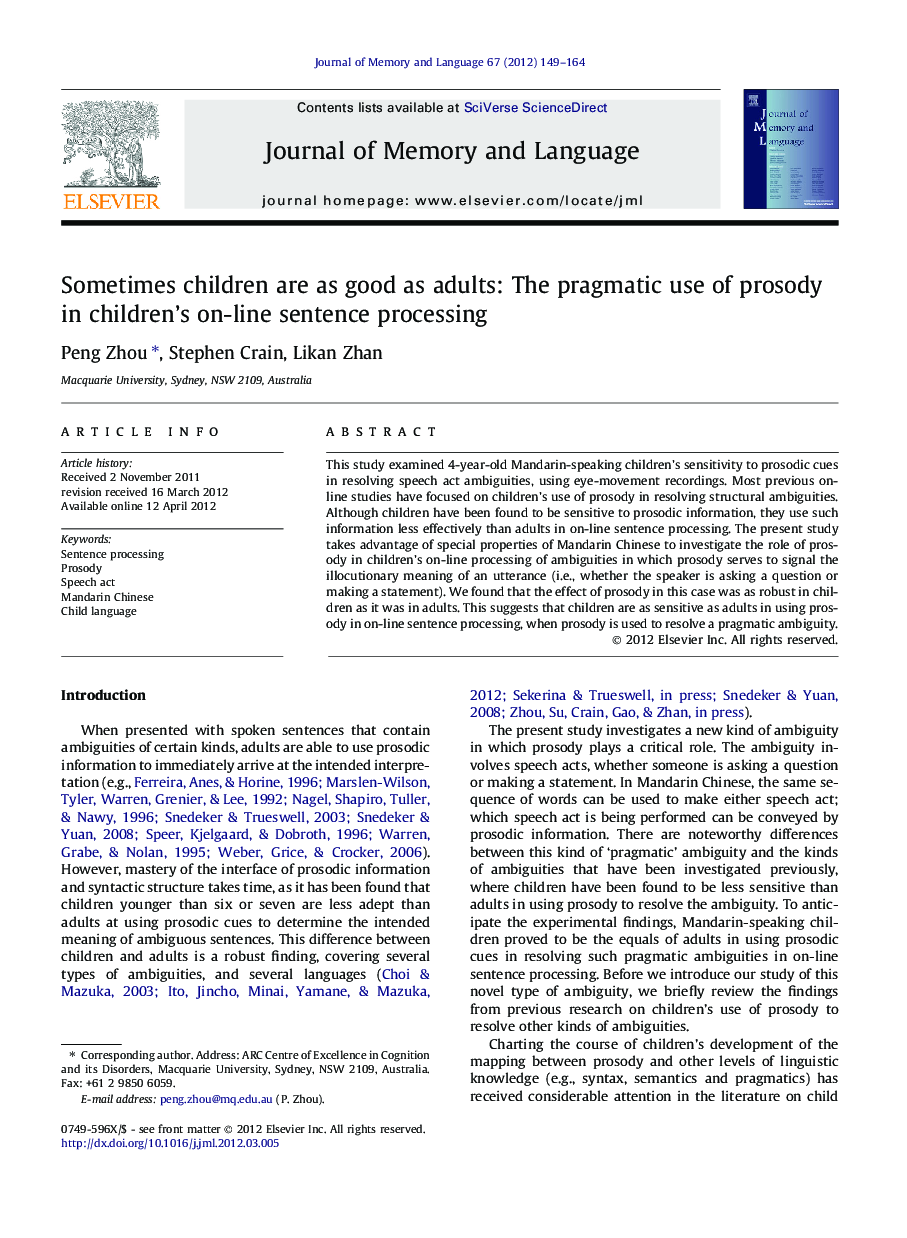| Article ID | Journal | Published Year | Pages | File Type |
|---|---|---|---|---|
| 932022 | Journal of Memory and Language | 2012 | 16 Pages |
This study examined 4-year-old Mandarin-speaking children’s sensitivity to prosodic cues in resolving speech act ambiguities, using eye-movement recordings. Most previous on-line studies have focused on children’s use of prosody in resolving structural ambiguities. Although children have been found to be sensitive to prosodic information, they use such information less effectively than adults in on-line sentence processing. The present study takes advantage of special properties of Mandarin Chinese to investigate the role of prosody in children’s on-line processing of ambiguities in which prosody serves to signal the illocutionary meaning of an utterance (i.e., whether the speaker is asking a question or making a statement). We found that the effect of prosody in this case was as robust in children as it was in adults. This suggests that children are as sensitive as adults in using prosody in on-line sentence processing, when prosody is used to resolve a pragmatic ambiguity.
► We investigate the pragmatic use of prosody in children’s sentence processing. ► Eye-movement patterns are compared in different prosodic conditions. ► Eye-movement patterns reflect the prosody of the spoken sentences. ► The prosodic effects in children are as robust as those in adults. ► Children are as good as adults in the pragmatic use of prosody in sentence processing.
